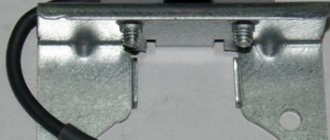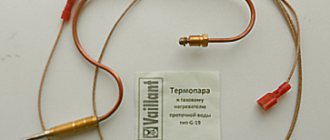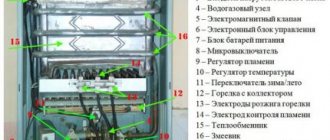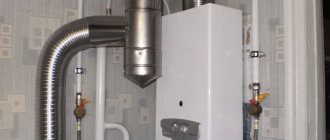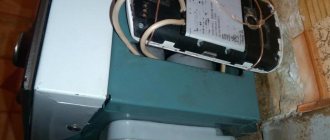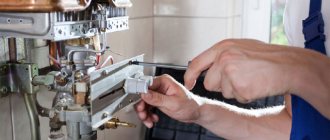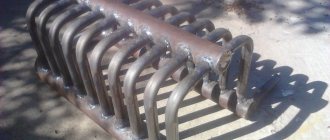To understand in detail how to repair a gas water heater with your own hands, consider the most common breakdowns, their causes and remedies.

All repair work must be performed with the gas valve closed (read how to repair the Oasis gas water heater in this article), even if you do not plan to disassemble the gas part. There is a chance that you accidentally unscrew the wrong nut and gas will start to come out.
Scale on the heat exchanger tubes


The heat exchanger consists of a shell and pipes, into which cold water enters and heats up there. In any case, over time, a small layer of scale appears inside. The main reasons for its occurrence are the high hardness of the water and the operation of the water heater at temperatures above 80 degrees.
It is possible to determine that the pipes of the column are clogged with scale by the fact that cold water flows from the tap actively, and hot water from the column in a thin stream.
The column can be repaired without removing the heat exchanger. The gas is turned off and the water valve is closed. It is necessary to remove the cover from the device and drain the water. To do this, unscrew the union nut from the water inlet to the water heater and turn on the faucet located below everything in the system, usually a faucet in the bathroom. Termaxi geysers have a special tap for draining water from the system. In this case, it is easier to drain the water into the substituted container.
After that, the nuts at the inlet and outlet of the heat exchanger are unscrewed and a special anti-scale liquid is poured into it through a hose, which can be bought at hardware stores. You can also use a vinegar or citric acid solution.
The column is left in this form for several hours. Then everything is connected back and the water valve is turned on. You need to slowly turn on the hot water tap. Dirty liquid should pour out. If after this the head has increased, then the heat exchanger pipes are cleaned. If necessary, you can repeat the entire cleaning procedure several times.
In order to avoid this breakdown, you need to use a water heater at temperatures of the order of 40-50 degrees. You can also install a filter at the inlet, which will purify the water from salts, which form scale.
What to do if the gas water heater goes out
The main reason for the extinguishing of the fire in the column during ignition may be low thrust or its complete absence in the ventilation duct. One of the most common reasons is a tightly closed plastic window. There is no air flow, and therefore the column overheats and the relay of the thermal protection of the gas column from overheating is triggered. If, when opening a window or door after 10-15 minutes, the column ignites and does not go out, then the reason for the extinction lies precisely in the overheating of the column.
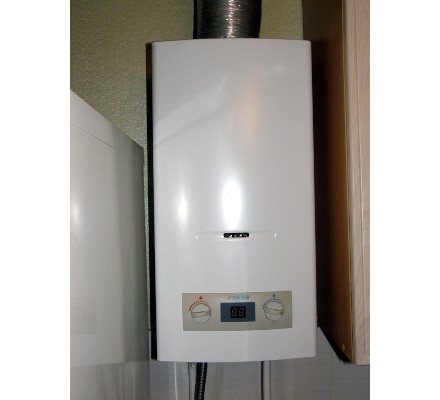

The most common reason for the lack of traction in the gas column is a tightly closed window.
Provided that the chimney can be clogged with products resulting from combustion or if a foreign object gets into it, the protection system starts to work in the water heater and the gas is shut off automatically. How to check the presence or absence of draft in the chimney? It is enough to open the window and attach a lighted match or palm to the chimney opening. In the presence of thrust, the flame will deflect, and with the palm of your hand you will feel the breath.
How do I fix the problem? The answer is simple: clean the chimney and ventilation duct. Companies can help you with this, whose specialists, upon request, will come to you and clean your chimney.
Another reason for the extinguishing of the gas burner flame may be the process of discharging the supply elements.If your column has automatic ignition from generators or batteries, then you will have to replace them with new ones, having previously checked the On / Off button.
Related article: How to make a transformer table with your own hands?
Clogged radiator
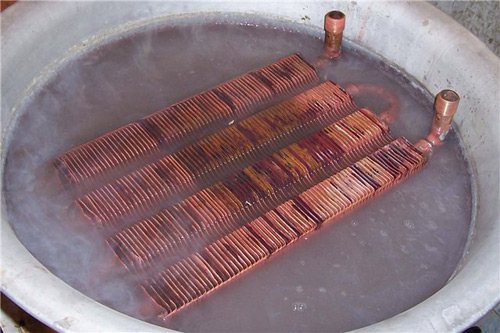

The heat exchanger radiator consists of pipes and metal plates closely spaced to each other. The plates are in direct contact with the flame, so over time, soot collects on them.
You can determine that the problem is in this by the following indicators:
- Flame yellow.
- The fire does not tend upward, but to the side, heating the case.
- When operating at full capacity, the water heats up slightly.
- Soot pours out from under the column.
In order to clean it, you need to remove the heat exchanger. For this, the casing is removed, and all the elements that hold it are unscrewed. During parsing, cover the burner with a rag so that no soot gets into it.
After removal, the unit rushes to the bathroom and washes there. It is best to leave it in a container with high sides for a few hours to allow the soot to deteriorate. Further, the space between the fins of the heat exchanger is cleaned under running water using a long-bristled brush and detergents. At the end, dry and install in the reverse order.
Gas burner repair with automatic protection system
More complex reasons for the extinction of a gas column with an automatic protection system will be described below.


To carry out the repair of the gas column, it is necessary to clearly understand how the components of the protection system work.
In geysers with an automatic protection system, the gas in the igniter must burn continuously, even regardless of the position of the handle, valve valves and mixers for water supply. The simplest automatic protection system for gas water heaters consists of three elements: a thermocouple, a thermal fuse, and a solenoid valve. The wick of the gas column goes out in cases of activation of the protection elements or in case of a thermocouple malfunction or a clogged igniter.
Related article: Landscaping of a small summer cottage (20 photos)
If the automation elements fail, evidence of their inoperability is the process when the igniter of the gas column goes out after they stopped holding the gas control knob. To carry out repair work, it is necessary to clearly understand how the nodes of the protection system work.
Leaking pipes
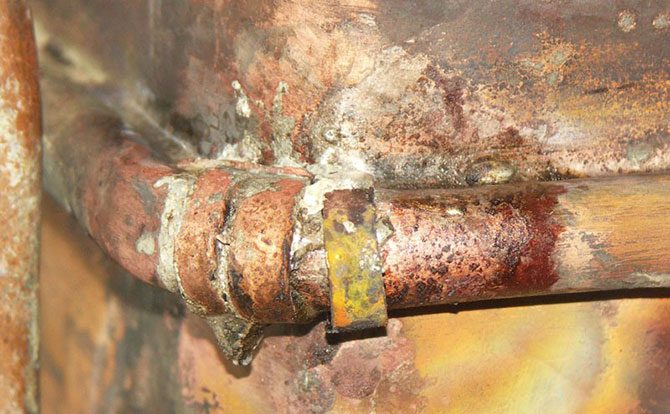

If water begins to drip from the column, the reason may be that fistulas have formed on the copper pipes. In order to find the place of leakage, you need to carefully inspect the heat exchanger with the water turned off. Some fistulas are easy to find, you will see how water comes out of these places. Small holes can be seen by green spots and rust all around.
There are three ways to eliminate the leak:
- Fit a clamp with a rubber gasket. If space permits, and the pipe does not fit snugly against the casing, the simplest, fastest and most effective is to install a metal clamp with a rubber gasket. Despite its simplicity, this method allows you to eliminate the leak without damaging the structure.
- Solder the fistula. Having previously cleaned and degreased, the place of leakage is covered with a flux. After that, using a powerful soldering iron or a torch with a gas cylinder, the fistula is soldered. In this case, it is necessary to ensure that the solder covers the desired section of the pipe with a layer of 1-2 mm.
If multiple holes are side by side, it will be effective to solder a piece of copper plate. It is not recommended to solder cheap Chinese heat exchangers. They are usually painted on top to hide the uneven color of the impure copper. In such columns, the pipes are too thin and will burn out during brazing. - Use cold welding. In this case, it is important to carefully look at the instructions and make sure that they can withstand high temperatures.A piece of cold welding is taken out of the package and kneaded with gloved hands until it hardens. After that, it is applied to the pipe and smoothed until it hardens completely.
After the end of the soldering, water is run into the water heater to check it. It is advisable to additionally clean and solder all areas of a greenish tint. Perhaps, after a while, new fistulas will appear there.
Also, leakage can form due to the fact that the gaskets are worn out. If water flows out of the pipe joints, you should simply replace the gaskets there with new ones.
The solenoid valve of the gas column does not work.
The guest wrote: the gas water heater stopped turning on, the gas simply does not ignite. Water flows, pressure is in the system, gas is open - it does not ignite, and that's it. The column is completely automatic, to do it as the master explained - nothing is needed, it works itself, lights up and turns off. After the wife washed, the column stopped turning on.
I think that "the wife washed herself" has nothing to do with it, there is no causal relationship between the wife's bathing and the failure of the column.
I also disagree that "90% is the reason for dead batteries." The reason “Gas is open - does not light up” may be the flow sensor, the automation simply “does not see” that there is water flow through the column. Or maybe the problem is in the gas valve. You can guess for a long time.
In any case, start by replacing the batteries (if you have fired up from them), it won't help - call a specially trained person. Of course, you will have to pay for diagnostics. But he will establish the exact cause of the problems.
The solenoid valve of the gas column does not work.
There is a solution when the solenoid valve does not open. Apparently there is a weak current on the coil, and even the gas pressure "holds" the valve closed, so the valve needs help (if the stem moves freely on the removed valve, it should work). A not very strong magnet should be applied to the back wall of the valve, so that it does not open the valve by itself (in my case, it was a magnet from the curtains). The valve stem will be in a magnetized state, and a minimum of effort will be needed to move it, even with dead batteries it works. You can experiment with the power of the magnet.
The situation is this - a friend turned to me (Lanos, 188000 km run, with second generation HBO) with the following syndromes: 1. It starts very badly on a cold morning.
As it warms up (if it starts!) Then it starts more or less both on gasoline and on gas. 2.
I screwed up with a starter in the morning (in the hope of starting) so that it squeezed out antifreeze from all the pipes at the same time!
Well, he guessed to quickly open the lid on the expansion tank - he equalized the pressure. Nothing even hurt. As a result, antifreeze was added after the repair and everything works. 3. He drew attention to the strangeness - it seems that
gas flow from the mixer
(like VAZovsky) on the manifold. 4. He got the feeling that
the antifreeze does not seem to walk along the entire circuit, including the gas reducer.
We began to understand in more detail and it turned out what really happened: the gas was dripping, the gearbox was poisoning, the gearbox itself was a little covered with frost, and the car really did not start.
Since not so long ago, a complete maintenance of the gearbox itself was done (and this is the first thing to do! All gaskets, rubber bands and a filter were replaced, the condensate was drained, everything was cleaned and assembled in the reverse order and checked for leaks), we did not do it. The gas was leaving (it gave a pang) and from this the gearbox from below was covered with frost a little. But he left in such a way that all the standard leaks were not revealed.
As an experiment, to confirm the symptom, the gas was shut off from the cylinder to the reducer overnight.
In the morning, the car started up with half a turn.
So the problem itself is poisoning the solenoid valve of the gearbox.
The principle of operation of the solenoid valve.
Consequences - a person puts a car in the garage in the evening.The engine is cooling down. The valve leaks and the gearbox itself is covered with frost underneath. Antifreeze freezes a little, thickens. The more the leakage, the more frost on the gearbox itself. (In our case, the leak was not obvious and the gearbox was not covered much. They did not even notice it right away.) The combustion chambers are filled with gas. And in the morning, when you try to start the engine, the mixture does not ignite. Mixer gas flows. How to fix it?
There are two options, even three. The first option is the most unfortunate. It is suggested to stretch the valve core spring. Look at the photo.
Result: The method is dead-end, according to experience and a survey of specialists - enough for two weeks!
The second option is laborious. Our case. We change the spring without options. (was taken at the service station from a friend in a drawer of the table) We grind the core elements.
A more detailed examination of the core itself after its dismantling revealed a depletion on the piston and in the liner itself, respectively. I had to grind. It is laborious, because you need not to overdo it and not take off crookedly or not take off too much! In any case, we remove the working thickness, which is also not good. Result: it works, the gas holds, the gearbox is not covered with frost, the car starts. BUT My opinion is not for long, tk. the valve seat is depressed. And the core itself wedges during operation. Photos are not mine. Borrowed from this user We did not do it in the process. Not before.
Valve seat depressed


Development on the piston and in the liner itself, respectively.
Smoothly moving on to the next option.
Option three: We buy a repair valve core kit and change everything as an assembly. After we enjoy the result.
A friend ordered. When he arrives, we will change.
I myself have been looking for information for a long time. I couldn't find it right away. Successfully solving this problem.
See also related topics of work on my reducer: Restoring the Tomasetto AT-07 gas reducer
Subscribe, rate, comment.
Peace and inspiration to all.
An electromagnetic gas valve with a filter cleans the liquid phase of the gas from suspensions and tarry deposits (coarse filter) and cuts off the gas supply when the engine is running on gasoline and when the ignition is turned off.
LPG gas valve, used to supply gas fuel and to stop it. In addition, it cleans the gas mixture from all kinds of impurities. Gas solenoid valve LPG is used for all vehicles when installing LPG equipment.

